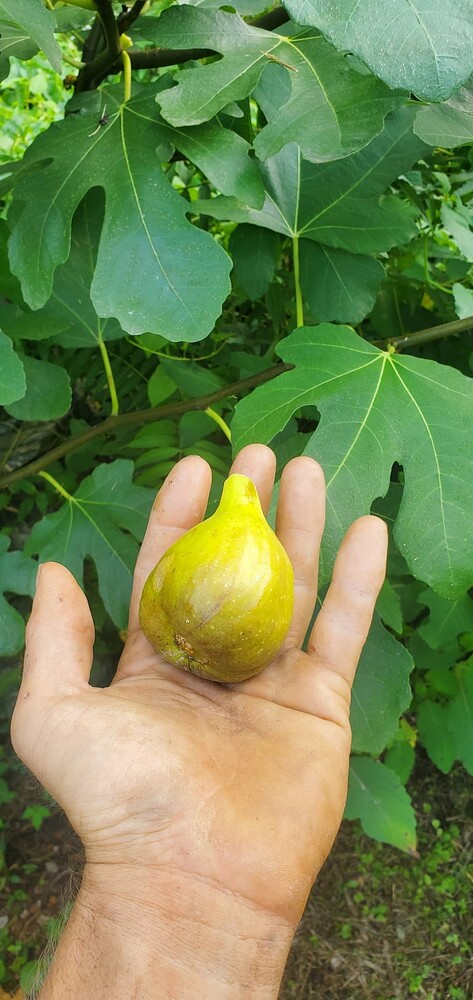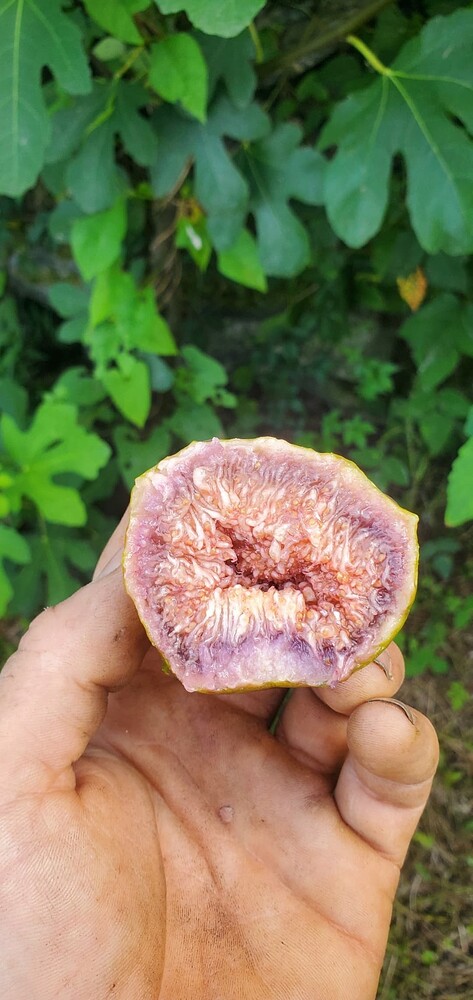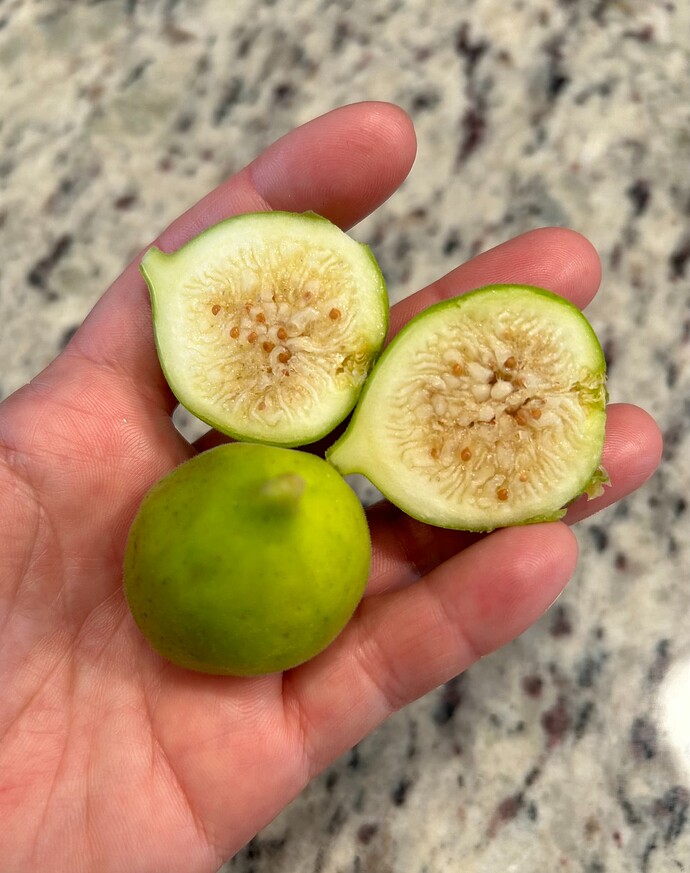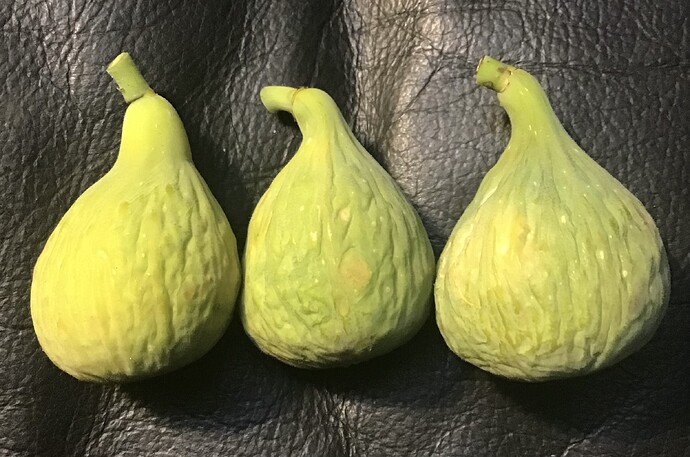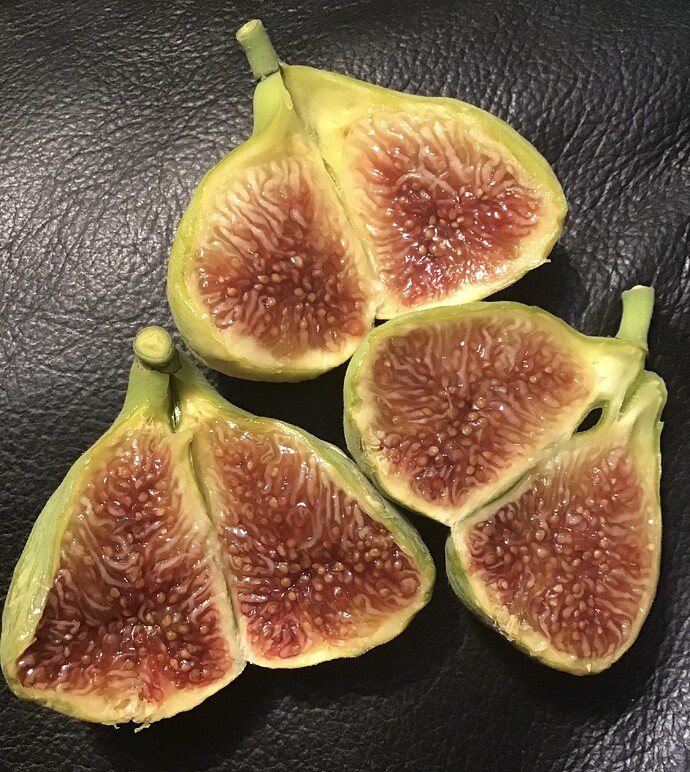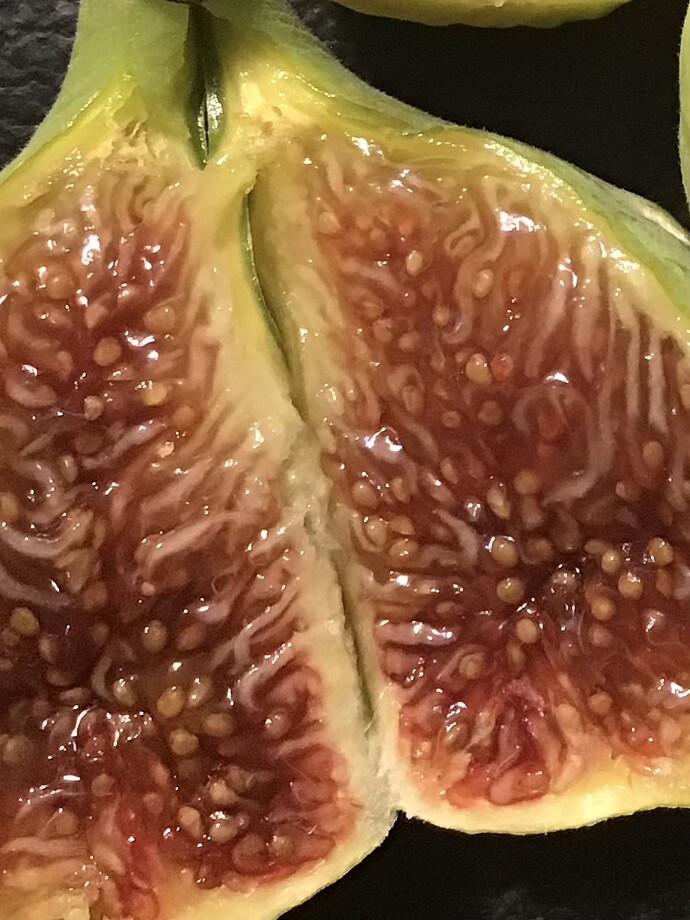Thanks!
I got this fig from Darren at Brambleberry farm and he says it is Lattarula. I have it planted in ground without protection and it has not experienced any dieback yet in my zone 7a/7b climate.
Its not the most productive fig but the fruits are very large (keep in mind i have big hands), and delicious. Ripens from July through September and then you will get a few small ones throughout the fall until the first freezes come.
That’s gorgeous! I love the violet interior!
Never seen one like that ![]() any chance you’ll be pruning any time soon
any chance you’ll be pruning any time soon ![]()
Likely the same as Peter’s Honey that has good cold hardiness. Correction: they’re close but not identical so disregard.
which figs are green and closed eyed and do well in heavy rainfall (over 60+ inches per year)? i heard the LSU varieties are good for my area but i don’t know if those are closed eyed? i was looking at the LSU Gold variety. my Hollier is not closed eyed and ants get in the figs before they get ripe.
Smith fits the bill pretty well. LSU Strawberry isn’t always closed for me but it does stay mostly green. It’s not an official LSU fig though. I’ll be testing a few other green varieties this year, but it’ll be a few years before I have anything really definitive to say about them.
Rain end of summer or fall is bad for figs are they’re fruiting
LSU hollier, champagne and tiger are the best of that line
But if you have a ton of rain during fruiting then i suggest you plant high and amend your soil to facilitate drainage. Or keep your figs in pots and out of the rain
Do you have a picture of your Hollier? Mine has a very tight closed eye so ants and other bugs seem to get none of it. Because of the very tight eye It also doesn’t rot or sour like many other figs can here. It gets so hot here in the summer I basically set the Hollier in a 2” saucer of water all summer and the tree did very well.
I know some people in Florida and they have recommended Ponte Tresa, Smith and White Madeira for green figs. If I grew figs there I’d also be growing one called the JFE Black Madeira.
My in ground Chicago Hardy grows 10 shoots 8 to 12 ft tall each year… and produces 400 figs in a average year.
Zone 7b. southern middle Tennessee.
TNHunter
I know you’ve said this elsewhere, but what year did you plant it? I’ve got some HC that were cuttings last spring and I grew out in 3 gal pots. Looking forward to getting to where you are!
@Nutbush-VA … i planted it in spring 2020.
Got it from One Green World.
It is on a south slope, south side of my home … all day sun… just off a tall brick wall.
TNHunter
Just caught myself thinking “that was quick” before realizing 2020 was half a decade ago ![]() Still not bad for 4 summers of growing.
Still not bad for 4 summers of growing.
now you’re making me wonder if the nursery sold me the wrong type of fig! here is a pic, i eat them when they start facing downwards but before they turn yellow because once they start turning yellowish green the ants get in the eye. i don’t have a picture of the bottom.
Have you tried tangle foot or something like that?
A few things. Mine are caprified so it’s hard to tell but I’d say. The wasp turns them into sweet light berry figs. I think those in your pic are picked too soon but later on when the figs aren’t pollinated they’re yellow similar to yours. One of the sweetest figs ever several people say it’s too sweet. Also one of the most vigorous growing trees (of 60) I grew last season besides LSU Tiger and UP.
@a_Vivaldi Tangle Foot is my go to for ants. Although when I see an ant in the yard it’s war.
Can i harass you for cuttings ![]()
Sure Melon, I’ll be up potting the tree then grafting a few things on there so i should have one or two extra cuttings. You won’t be getting colors like this unless you grab a persistent caprifig and hand pollinate which I suggest you try to do anyways for many figs. If you don’t have one might be in luck. Will dm.
Please forgive my ignorance, but do your persistent caprifigs produce good fruit also? I mainly hear folks talk about common figs, but then again most of us live in waspless zones anyway. I’ve wondered if there was benefit to growing caprifigs in cold zones.
